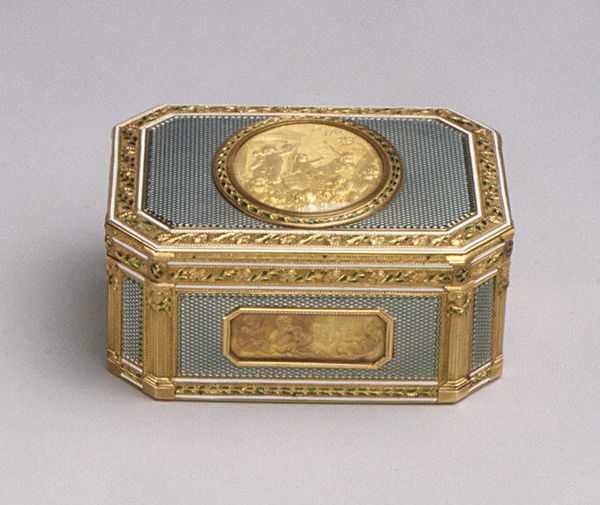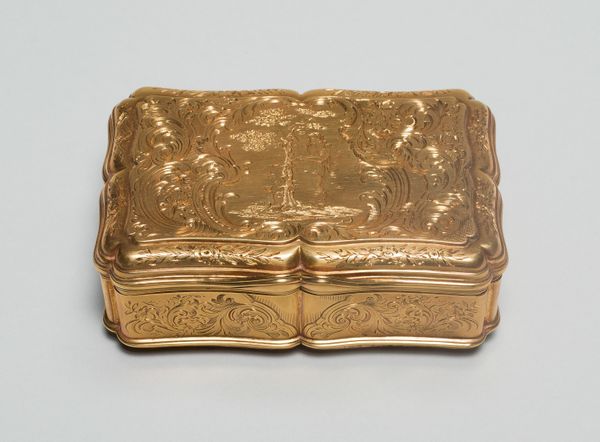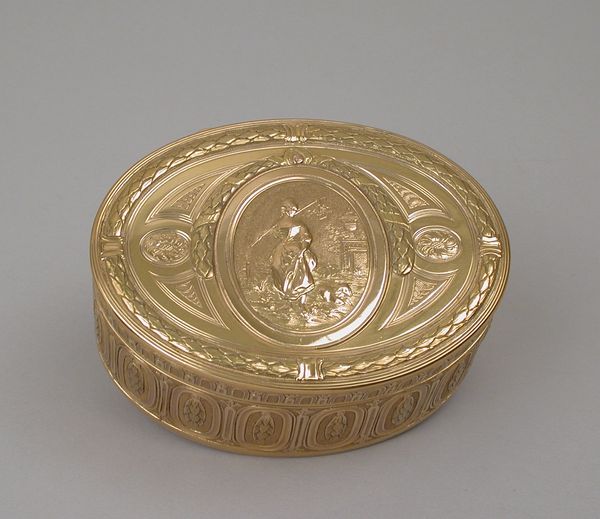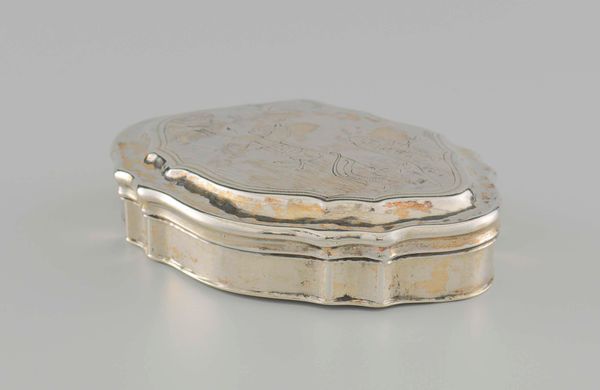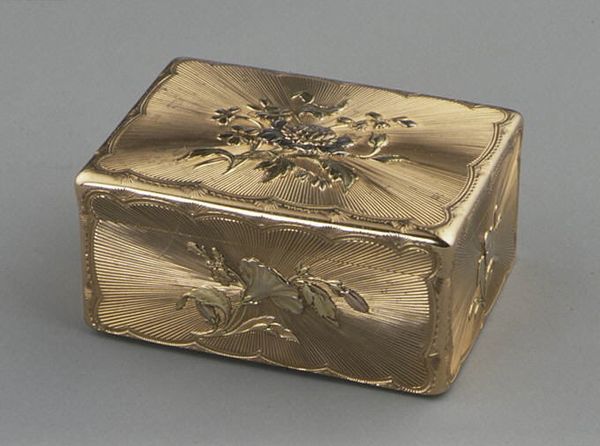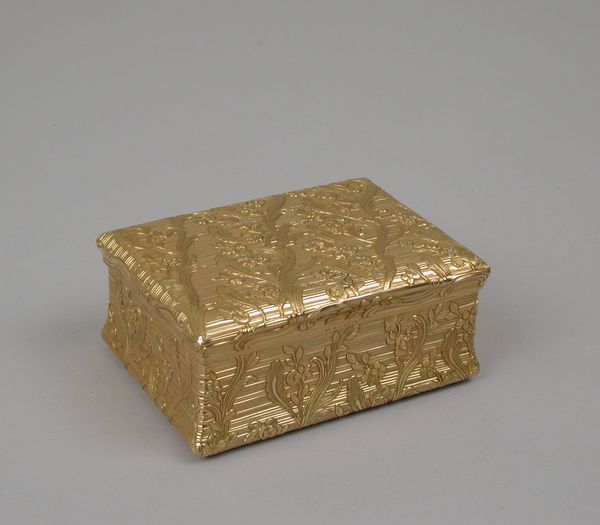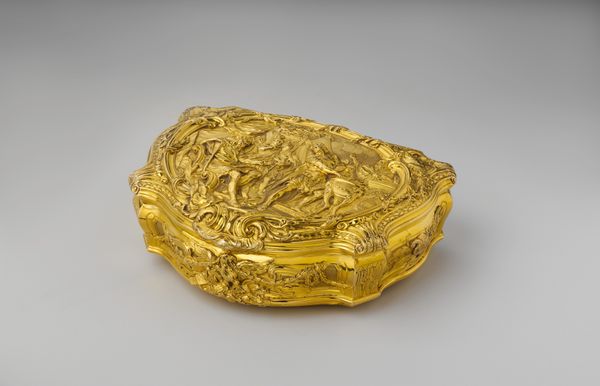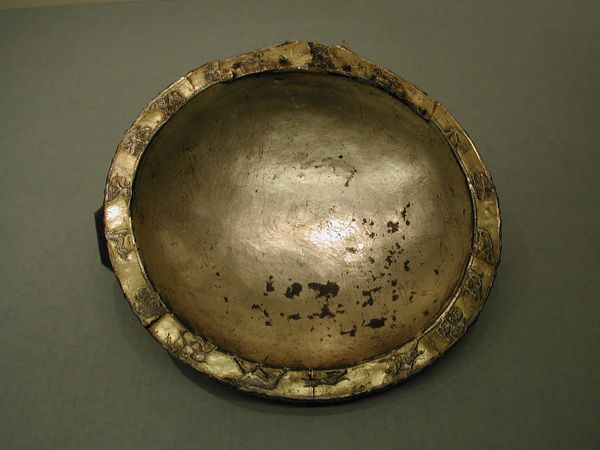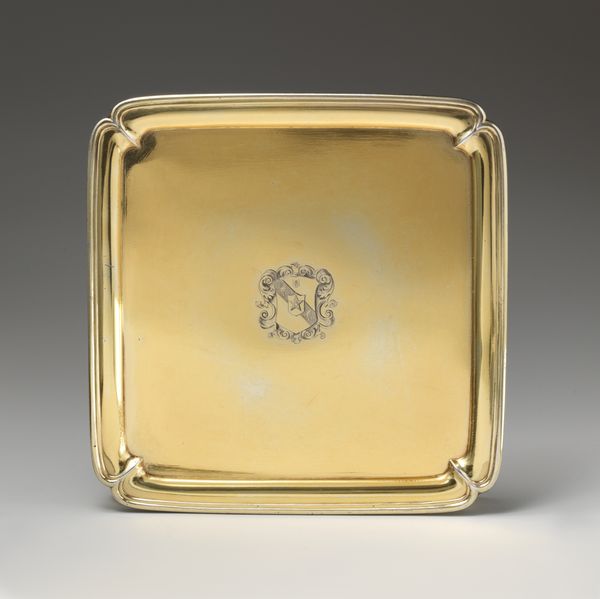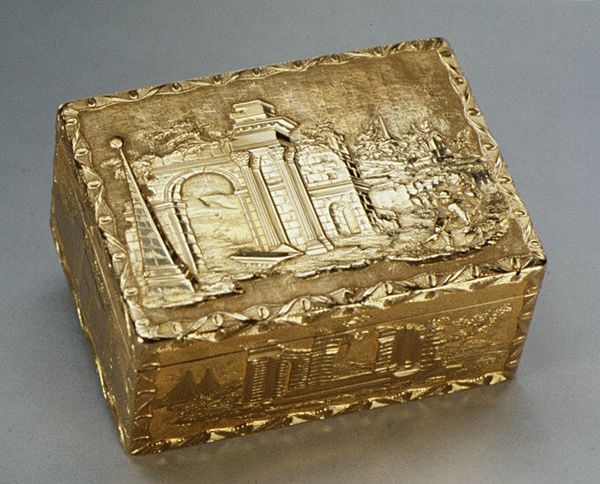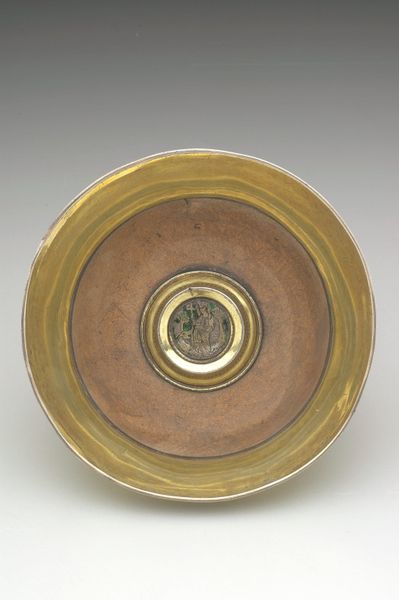
silver, metalwork-silver, sculpture
#
silver
#
baroque
#
sculptural image
#
metalwork-silver
#
sculpture
#
decorative-art
Dimensions: Overall (confirmed): 1 1/4 x 10 11/16 x 10 11/16 in., 26.879oz. (3.2 x 27.1 x 27.1 cm, 762g)
Copyright: Public Domain
Curator: This is a silver salver, or serving tray, that was part of a coffee service crafted in 1724 by the esteemed silversmith Edward Pearce. You can find it on display here at the Metropolitan Museum of Art. Editor: It has an austere formality about it. Even its golden hue, from the aged silver no doubt, reads less like warmth and more like a statement of authority. It makes me think about who might have used it and the implications of that kind of refined service. Curator: That's an excellent point. Pieces like this were certainly signifiers of wealth and power. Silver during the Baroque period was employed to broadcast status and, increasingly, connection to colonial economies. The simple act of drinking coffee was, by this point, a carefully orchestrated ritual designed to underscore class and empire. Editor: And a deeply gendered one, no doubt. These spaces—the home, the coffee service—became theatres for performances of masculinity and femininity that shaped social roles. What stories were left untold by its reflective surface? Who was excluded from this scene of gentility? Curator: Precisely. Silver services in elite households often relied on enslaved labor for the extraction of the very material and for the production of commodities traded for it, let alone the labor needed to maintain them. Understanding its position in social hierarchies helps us rethink its purpose. Editor: Its scale, relatively modest, speaks volumes too. Not grand, not ostentatious in its size. It fits into this world of almost clandestine rituals, serving as a vessel not just for objects, but also for upholding unspoken societal expectations. Curator: Yes, while the artistry and craftsmanship are remarkable, it's impossible to separate it from its function in perpetuating social inequalities. Even the decorative arts were potent political symbols. Editor: And that awareness reframes the entire experience of looking at it. I can no longer see a pristine object without also recognizing the histories—both glorious and shameful— embedded within its gleam.
Comments
No comments
Be the first to comment and join the conversation on the ultimate creative platform.

